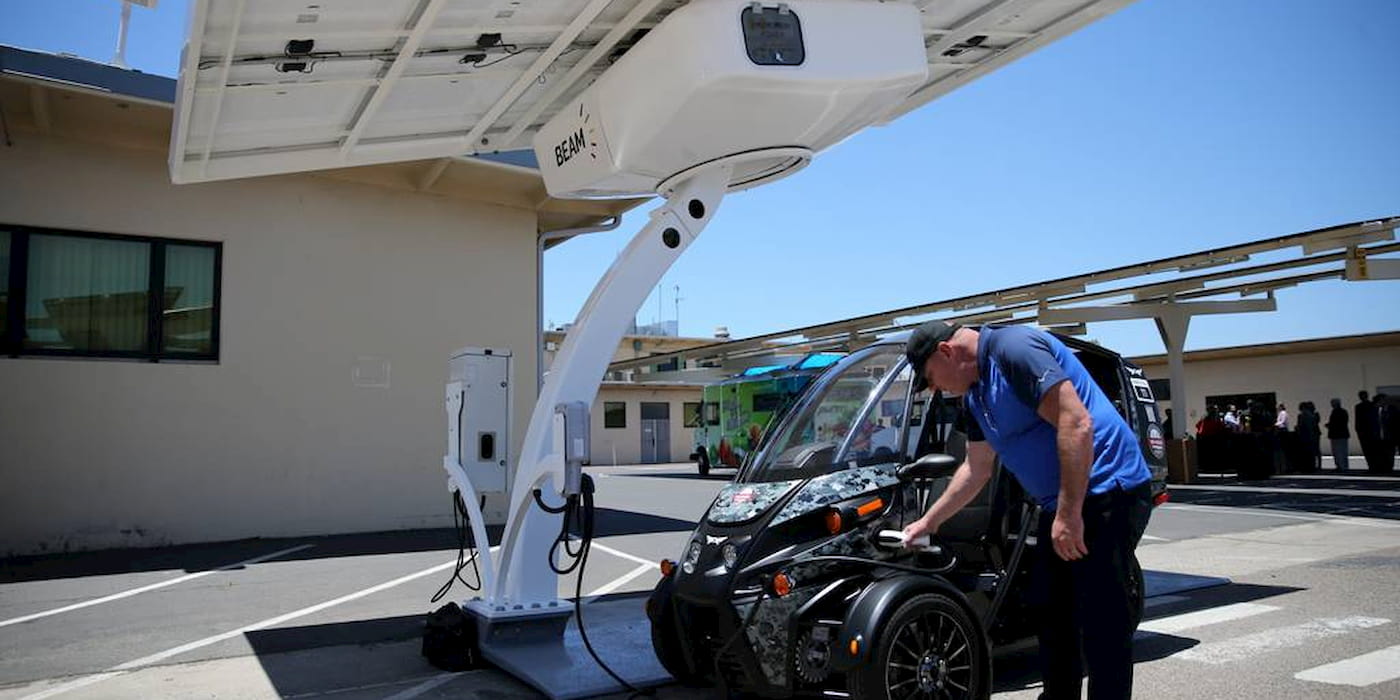Charging stations coming to US military sites as DOD rolls out EVs

The Department of Defense (DOD) is well aware that electric vehicles are rolling out at a record pace and are only expected to continue gaining vehicle market share. As a result, the Defense Innovation Unit, a sub-division of the DOD, is partnering with the Navy, Marine Corps, Air Force, and Army Reserve to install EV charging stations at eight US military sites.
The post Charging stations coming to US military sites as DOD rolls out EVs appeared first on Electrek.
The Department of Defense (DOD) is well aware that electric vehicles are rolling out at a record pace and are only expected to continue gaining vehicle market share. As a result, the Defense Innovation Unit, a sub-division of the DOD, is partnering with the Navy, Marine Corps, Air Force, and Army Reserve to install EV charging stations at eight US military sites.
The Defense Innovation Unit (DIU) was established to help “accelerate the adoption of leading commercial technology throughout the military” to enhance capabilities and national security.
An issue that doesn’t get enough attention is the DOD’s fight against mother nature. Climate change presents several threats to US national security, with a growing number of harmful weather events like hurricanes, droughts, extreme temperatures, and floods. Since 2017, weather-related deaths are up by 35%, according to the National Security Council.
I saw firsthand the devastating effects weather could have after Hurricane Ian changed paths at the last minute, slamming into Florida as a category four with 155mph winds when it made landfall.
As a result, the DOD responds by providing response teams (National Guard) to clear roads, deliver essential supplies like water and food, and conduct search and rescue, all of which take considerable resources.
Former US Secretary of Defense Chuck Hagel even labeled climate change a “threat multiplier” due to its ability to accelerate other issues, like disease.
To help combat and limit the effects climate change is having in the US, the DOD has rolled out a climate action plan for each division. A focal point of the new action plan is implementing electric vehicles into its fleet.
In early October, the DOD said it was testing GM’s Ultium platform for functional military vehicles. Now, the Department is partnering to pilot the installation of modern EV charging stations across eight military sites to provide charging solutions, paving the way for electric vehicle adoption.
EV charging for fleet and personal military vehicles
According to DIU energy portfolio manager Benjamin Richardson, a combination of Level 2 and Level 3 chargers will be deployed. On top of this, EV charging will be available for government and privately owned military vehicles.
After installation, the DIU will run a year-long program, studying:
- Uptime
- Wait times
- Vehicle types
- Fleet or personal vehicles
- Time to repair
The program will test a charging-as-a-service payment model to offset infrastructure costs. Mr. Richardson says:
By increasing the number of chargers on military bases, DOD is creating the infrastructure needed to expand EV usage, which will minimize carbon emissions in the long run. Upon successful completion of the pilot, DOD partners intend to rollout chargers to other bases across the United States.
The DIU received 44 submissions for its military EV charging project, which will be narrowed to seven by a panel of DOD experts. To complete the first eight pilots, the DOD has partnered with TechFlow, which has expertise in energy efficiency and sustainable projects.
Keith Benson, director of energy-navy installations command, adds:
EV technology is not novel, but its use in military installations is, especially when combining Level-2 and Level-3 chargers for overnight and fast-charging use cases within the same military base. We’re excited to help with the military’s effort to reduce its carbon footprint by making EV charging for government and service members more accessible than ever.
The DIU can accelerate the prototype contract award in 60 to 90 days compared to DOD contracting, which can take over 18 months. Once the program is complete, the successful prototypes can transition to follow-on production-OT agreements or FAR-based contracts.
FTC: We use income earning auto affiliate links. More.
Subscribe to Electrek on YouTube for exclusive videos and subscribe to the podcast.
